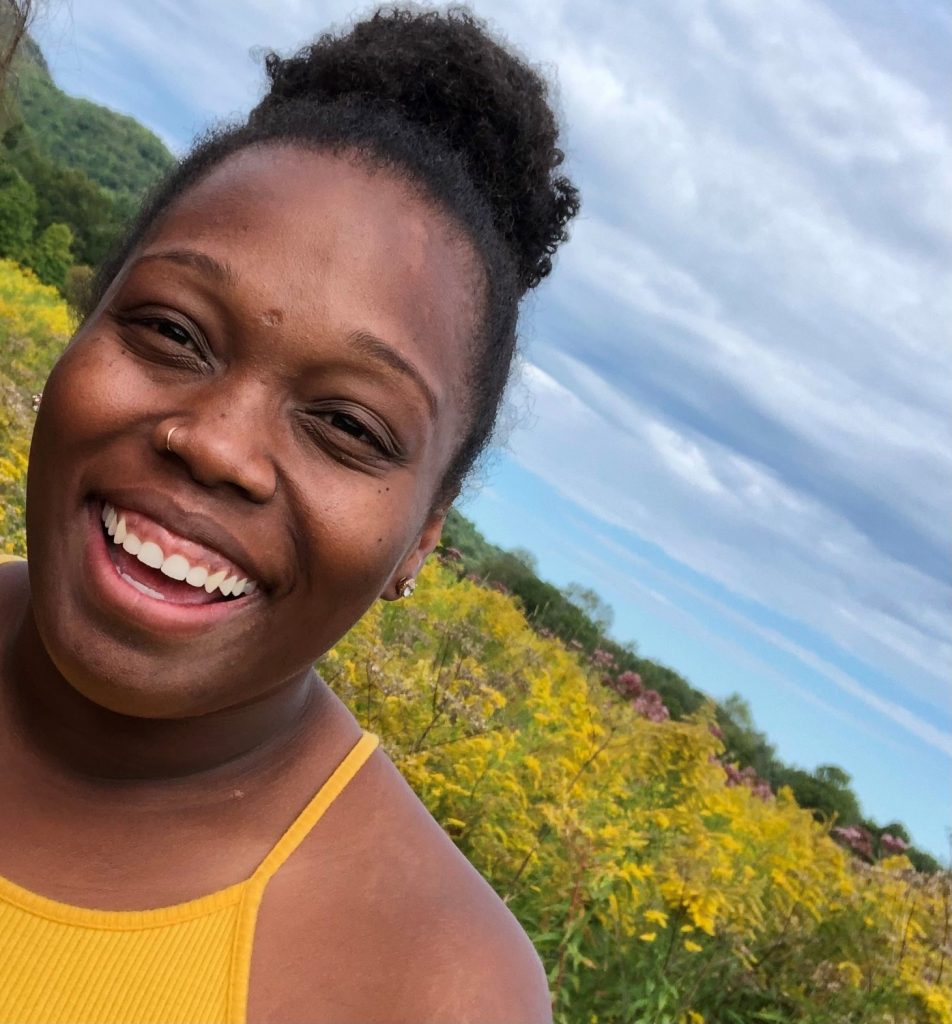In this Featured Member series, AATA celebrates the work of our members.
June 15, 2021
Tell us about yourself
 I was born and raised in Guyana, South America. My family moved to the United States in 2000. I received my B.S. in Psychology with a minor in Art from Stevenson University in 2015 and then went on to receive my Master of Art Therapy and Creativity Development from the Pratt Institute in 2019, exploring the factors influencing immigrant clients with eating disorders for my research. I currently work as Art Therapist and Children’s Program Manager at a domestic violence organization and shelter called My Sister’s Place. I am also passionate about research, specifically focused on eating disorders, diet culture and body positivity.
I was born and raised in Guyana, South America. My family moved to the United States in 2000. I received my B.S. in Psychology with a minor in Art from Stevenson University in 2015 and then went on to receive my Master of Art Therapy and Creativity Development from the Pratt Institute in 2019, exploring the factors influencing immigrant clients with eating disorders for my research. I currently work as Art Therapist and Children’s Program Manager at a domestic violence organization and shelter called My Sister’s Place. I am also passionate about research, specifically focused on eating disorders, diet culture and body positivity.
Why did you decide to pursue a career in art therapy? Is there a client group in particular you work with?
I found that Art therapy was the perfect intersection of creativity and helping others heal, two things that I’m incredibly passionate about. I was a psychology student in undergrad when art therapy was introduced to me as part of my own healing. As a client, I found that art allowed the space to express things that I was never allowed to think, or say or express before. I found a safety in not only my art but the art making process. I knew for sure this was the career path for me after that. Right now I work with survivors of domestic violence/sexual assault and survivors of human trafficking, but have also enjoyed working with incarcerated adults. I am passionate about the process of helping people heal and find a voice through the creative process.
What does Pride Month mean to you?
Pride month for me represents an invitation for visibility. An invitation for queer people to show their authentic selves. In a society where it isn’t always safe for people to be seen as who they are, it’s important to not only take time to celebrate who we all are but to also offer safety and protections so that folks may be safely visible. Visible without fear of prejudice and persecution for being who they are. The people of marginalized communities need to know that they are seen, loved, welcomed, protected and valid.

“Untitled” by Sharelle Langaigne. Clay and acrylic paint. December 2020.
Is art therapy uniquely suited for working with LGBTQIA communities? Why?
I think that art therapy offers an opportunity for self-expression and exploration that is unlike any other forms of therapy. In my personal experience of working with an art therapist, it allowed me to be fully seen in a way that was true to who I am, for the first time. Art therapy gave me an opportunity to explore myself and my sexuality in not only a new way but a safe way. I think one of the beautiful things that the creative arts can offer to the LGBTQIA communities is not only a space where you can authentically show up as you, but also a space where you can discover who you are as many times as you need to, in whatever way you need to.
There are many communities fighting for long-overdue justice, how have you incorporated intersectionality in your advocacy and practice?
In my work I’ve tried to create a space where all feel welcome to come as they are. I encourage every client that I come in contact with to discover their voice and use it in a way that feels safe for them. My own artwork gives me a place to honor and celebrate my own culture, heritage and intersectionality. It was especially important for me when I didn’t feel safe enough to express all the parts of my intersectionality with my voice. My art is limitless.
